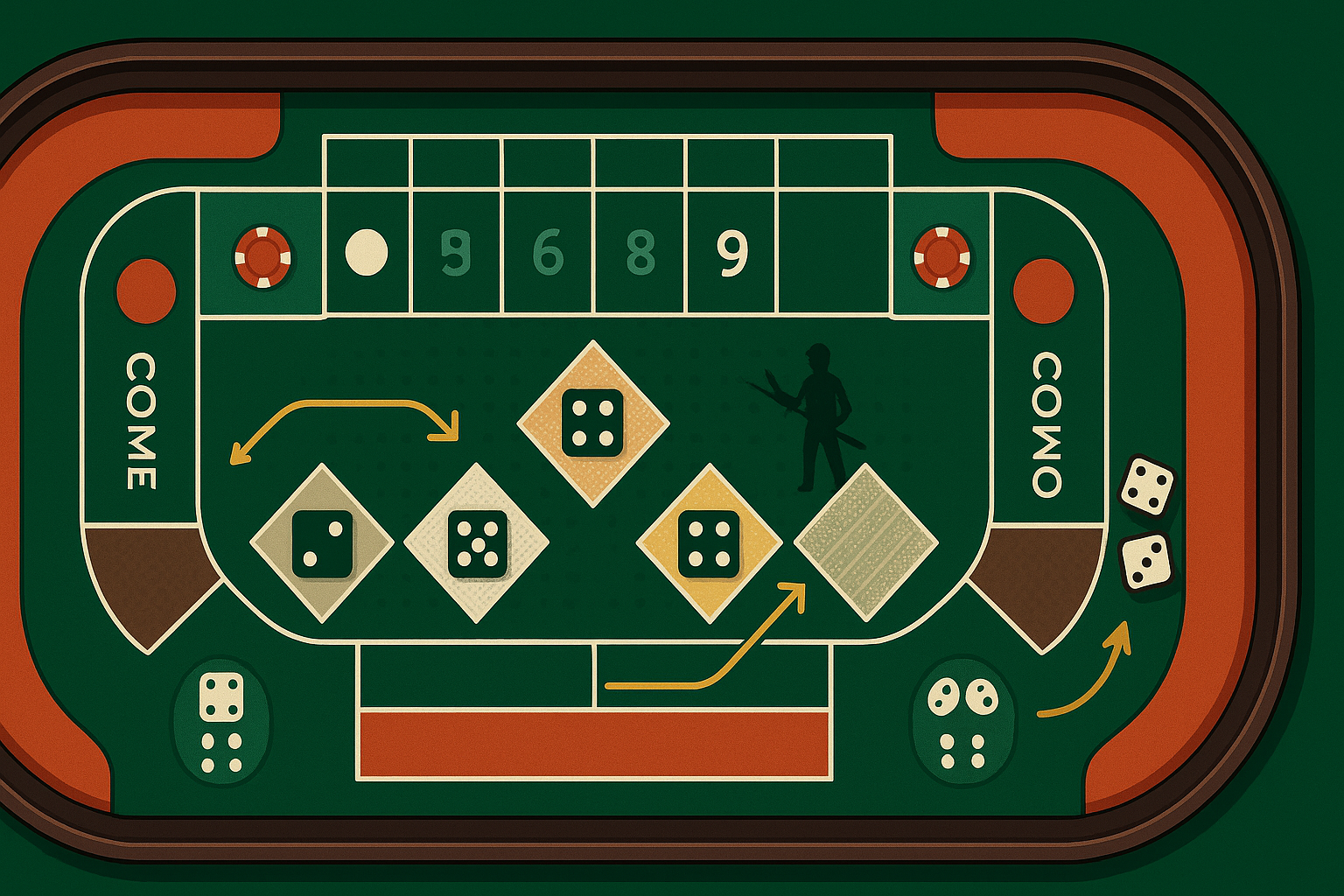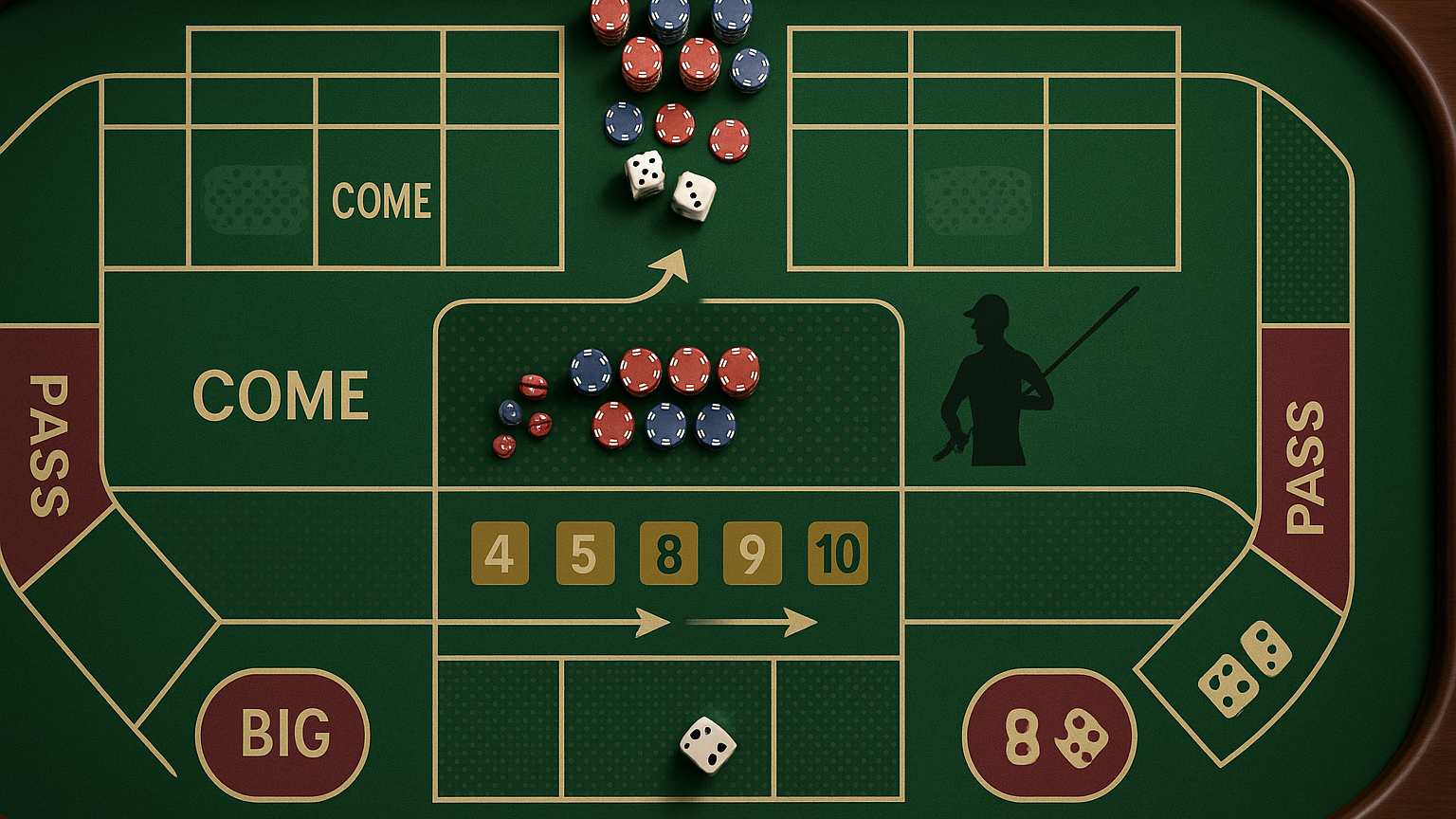If you are a beginner fan of the game craps, then this guide is for you. We will go through each key zone of the table one by one and figure out what each one means and how it fits into the game solutions. You can learn the table structure by playing a free craps game and only then move on to playing for real money.
General Table Structure
A classic craps table is about 3.7 meters long and about 1.2 meters wide. The layout is symmetrical, so that players have the opportunity to play on both sides. In the center is the area for high-risk bets, and on the sides are the main areas for popular and profitable bets. The main idea of the craps table layout is to divide the areas by betting types.
Proposition Bets
The central area of the craps table is the Proposition Bets zone. These are bets on a single roll or on special combinations that give players big wins, but imply a large house edge.
The following bets are included here:
- Any Seven (a bet that the next roll will be a 7).
- Any Craps (a bet on numbers like 2, 3, or 12).
- Yo (11) (a bet on 11).
- Hardways (these are bets on complex combinations).
- Horn and C&E (these are bets on multiple numbers at once).
- The stickman is responsible for accepting bets in this area.
Side Wings — Main Betting Lines
Along the outer edge of each wing is a wide Pass Line strip, intended for the main bets. This is the so-called bet for the player. The bet is made before the first roll of the round (come-out roll). The bet is considered a winner if the numbers 7 or 11 appear on the table. It is a loser if the numbers 2, 3, or 12 appear on the table. If any of the other numbers appear (for example, it can be 4, 5, 6, 8, 9, 10), this number becomes the point, and the Pass Line wins if the point comes up again before 7 comes up.
Nearby is another zone, called Don’t Pass. Here, so-called bets against the player are made. The bet is considered a winner if the numbers 2 or 3 appear on the table, and is considered a loser if the numbers 7 or 11 appear. The number 12 is usually considered a tie. After the point is set, Don't Pass wins if a 7 is rolled before the point.

Come and Don’t Come Zones
Just above the above zones are the Come and Don’t Come betting areas. These bets work on the same principle as Pass and Don’t Pass, but players can place them after setting a point in the round. The Come bet is considered a winner when the numbers 7 or 11 appear on the table; the bet is considered a loser if 2, 3, or 12 appear on the table. If another number appears, it is considered the player’s “personal point”. Don’t Come bets work on the opposite principle.
Place, Buy, and Lay bets
In the central part of the craps table, there are large areas with numbers 4, 5, 6, 8, 9, and 10. These are the so-called box numbers. Players can bet on them in the following ways:
- Place Bet (this is a bet that the number chosen by the player will appear on the table before 7)
- Buy Bet (this bet is similar to the Place bet, but assumes payment according to real chances and a commission of about 5%).
- Lay Bet (this is a bet against a number; it is considered a win if 7 appears on the table before the number chosen by the player)
- Come and Don’t Come chips are also moved to this area when a point is set for them.
Big 6 and Big 8 Zones
Some casino tables also have a Big 6 and Big 8 zone. This is for betting on a 6 or 8 appearing on the table before a 7. They pay out 1:1, but experienced players usually avoid them, as the payout for Place bets on 6 or 8 is better — 7:6.
Conclusion
The craps table looks complicated only at first glance. If you figure it out, everything is quite simple. Understanding the role of each zone on the table will help you confidently navigate bets, as well as understand where strategic bets are possible, and which bets are better to refuse, since they are not profitable.




